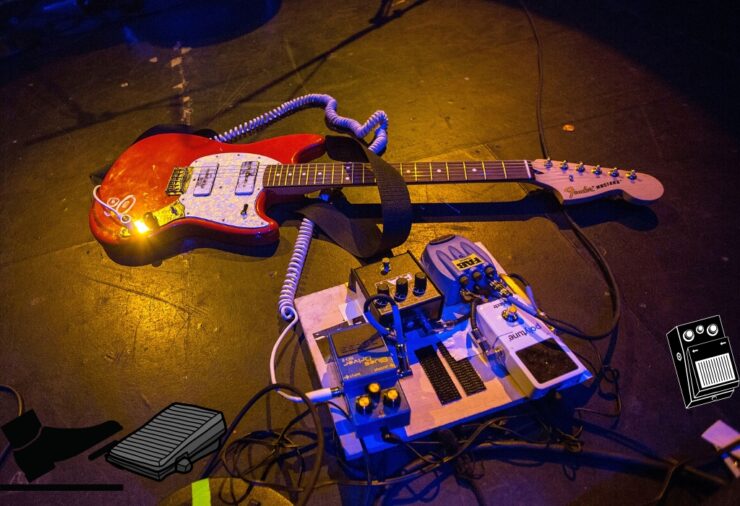Guitar players often use multiple effects pedals to shape their tone and achieve the desired sound. Two popular types of effects pedals are compressors and fuzz pedals, both of which can significantly impact the overall sound. However, when it comes to the order in which these pedals are placed in a signal chain, there is some debate among musicians.
Specifically, the question of whether a compressor pedal should go before or after a fuzz pedal has sparked much discussion. In this context, we will explore the reasons behind this debate and examine the advantages and disadvantages of each approach to help guitar players make informed decisions about their pedal placement.
Understanding the signal chain in a guitar rig
When it comes to creating the perfect sound for a guitar rig, it’s important to understand the signal chain, and specifically which order the pedals should go in. This is especially important when it comes to deciding where a compressor and fuzz pedal should go in the chain.
Let’s take a closer look at how these two pedals interact and which should come first.
The role of the compressor pedal in the signal chain
It is an essential component of the signal chain in a guitar rig. It helps to even out the dynamics of the guitar signal, making the quieter notes louder and the louder notes quieter, resulting in a smoother and more consistent sound.
The compressor pedal is typically placed early in the signal chain, before distortion and modulation effects such as fuzz, overdrive, and delay pedals.
This is because these effects tend to magnify any inconsistencies in the guitar signal, making the compressor pedal’s job more difficult.
However, some guitarists prefer to place it after fuzz pedals, as it can help to tame any excessive noise or harshness produced by these effects.
The role of the fuzz pedal in the signal chain
It is a crucial component in the signal chain of a guitar rig, as it significantly affects the tone and overall sound created.
In the signal chain, it is typically placed after the compressor pedal and before any other modulation pedals such as chorus, phaser, or delay. This is because it works best when it’s fed a strong and uncompressed signal, which is why it’s essential to place it after the compressor.
However, some guitarists prefer to place the fuzz pedal before the compressor to create a more compressed and sustained tone.
Placing the Compressor Pedal Before the Fuzz Pedals
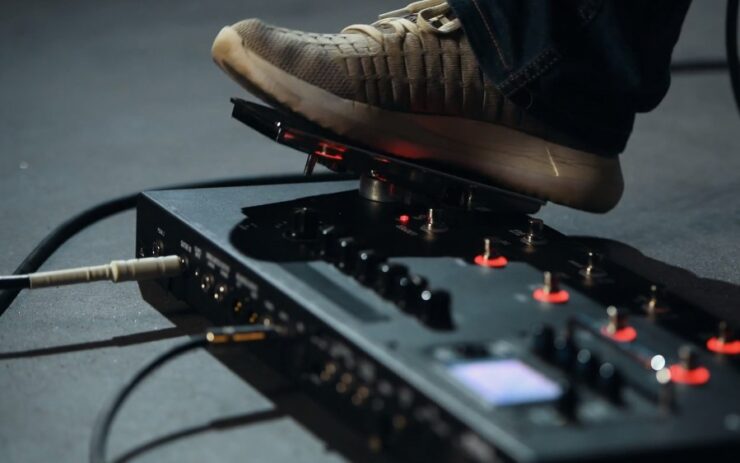
If a compressor foot lever is placed before a fuzz foot lever, it can alter the sound of the fuzz pedal and make it sound more compressed and punchy. Let’s discuss the reasons why you should always place the compressor pedal before your fuzz pedal.
The benefits of placing the compressor pedal before the fuzz pedals
Placing the compressor lever before the fuzz foot lever in your guitar pedal chain can have several benefits in terms of sound quality and tone shaping.
Here’s why:
A compressor pedal is intended to smooth out the dynamics of your guitar signal, making the soft parts louder and equalizing the levels between notes. Putting it before your fuzz ones can help reduce their inherent high-end spikes and balance the overall sound.
Furthermore, it can help boost the volume of your guitar signal before hitting the fuzz pedals, resulting in a more distorted and saturated tone.
Ultimately, the arrangement of your foot levers in the signal chain is a matter of personal preference, but placing the compressor pedal before the fuzz ones is worth experimenting with to see if it suits your style and sound.
The drawbacks of placing the compressor pedal before the fuzz pedals
Placing it before the fuzz pedals can result in some drawbacks and may not be ideal for all guitarists’ preferences.
Here are some of the drawbacks of placing the compressor pedal before the fuzz pedals:
- Loss of fuzz tone: They can squash the dynamics of the guitar’s signal, resulting in the loss of tone and sustain from the fuzz pedals.
- Noise: They can increase the noise in the signal chain, leading to more hiss or hum when used before the fuzz pedals.
- Unwanted sustain: These foot levers can add unwanted sustain to the signal, resulting in a sputtering or oscillating sound when used with fuzz pedals.
Examples of guitarists who use compressor pedals before fuzz pedals
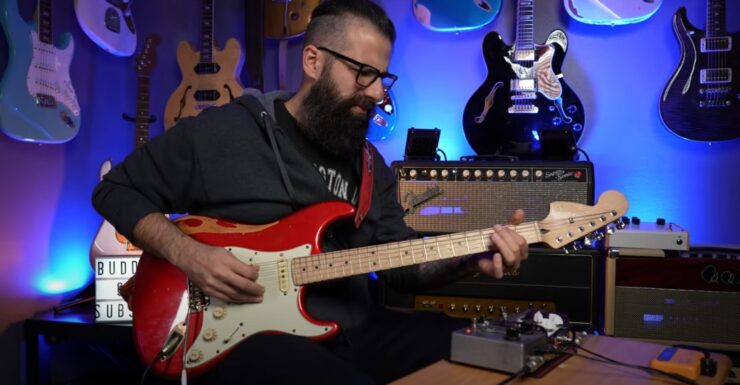
Many renowned guitarists use a compressor pedal before a fuzz pedal to enhance their sound and achieve the specific tonal qualities they desire from their setup.
Some examples of guitarists who employ this technique include:
- Jimi Hendrix – used Univibe, Octavia, and Fuzz Face pedals in combination with a compressor to achieve his signature sound.
- Jeff Beck – uses a compressor before his fuzz pedal to accentuate and tighten up his picking and picking dynamics.
- David Gilmour – Uses the DynaComp compressor pedal before the Big Muff fuzz pedal in his setup for a smoother and long sustain.
Experimentation and Personal Preference
While in some cases logical order reigns, when it comes to fuzz and compressor pedals, experimentation is key. Ultimately, the order of your pedals depends on personal preference, and what works best for your style of playing.
Let’s dive into the details to further explore this question.
The importance of experimentation with pedal order
Experimentation with their order is crucial for guitarists looking to achieve their desired sound. There are many variations in arranging them, and each combination can produce a unique tone, depending on the individual player’s preference.
One question guitarists face is whether the compressor pedal should go before the fuzz foot lever. While some argue for placing the compressor before the fuzz, others prefer the opposite arrangement.
Ultimately, personal preference and experimentation are the only methods for determining your preferred order. Some guitarists may prefer the boosted and sustained sound that the compressor provides before the fuzz, while others prefer the distortion effect created by placing the compressor after the fuzz.
So, it is essential to experiment with different combinations and pedal orders to discover what works best for you and your playing style.
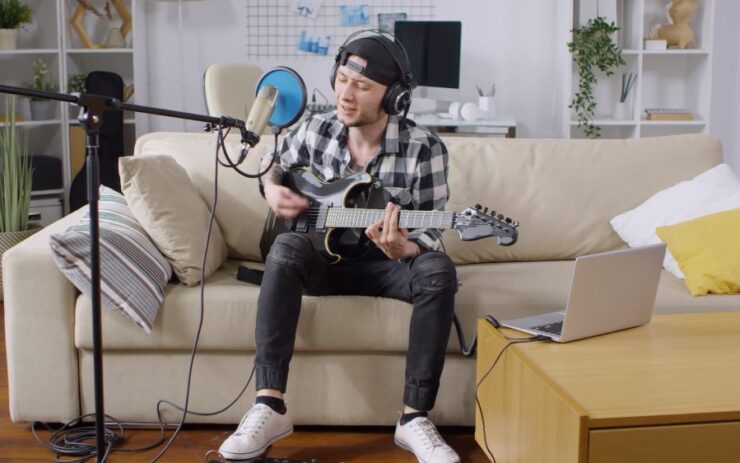
How to figure out the best order for your pedals
When arranging your guitar pedals, figuring out the best order can be a daunting task. However, there is no one “right” way to order your pedals as it largely depends on personal preference and experimentation. Here are a few tips that can help:
Start with the basics:
Place your pedals in an order that makes sense to you. Typically, most players prefer laying the gain pedals like overdrive, distortion, or fuzz earlier in the chain, followed by modulation, delay, and reverb.
Consider your sound:
If your goal is to have a clear and articulate sound, start with a compressor pedal because it helps to even out your playing. Otherwise, you can place your compressor later in the chain.
Factors to consider when deciding on pedal order
Experimentation and personal preference should guide your choices. However, there are some general guidelines to consider.
• Firstly, it’s typically recommended to put filters or compressors first in the chain to shape your overall tone before it gets affected by distortion or other effects.
• Secondly, modulation effects such as chorus or phaser are typically placed after distortions or overdrives.
• Thirdly, time-based effects such as delay or reverb are recommended to be put last in the signal chain.
Ultimately, the pedal order comes down to personal preference and experimentation. Try out different setups with your pedals in different orders to determine the best tone for your needs.
FAQs
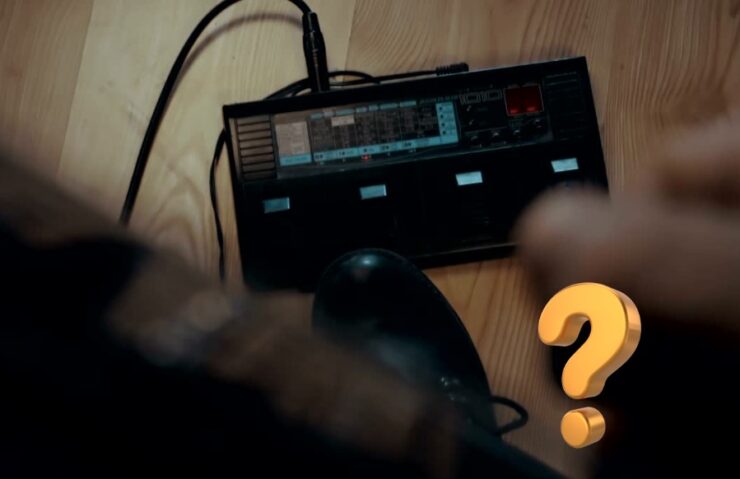
What are some benefits of placing a compressor pedal after a fuzz pedal?
Placing it after a fuzz pedal can enhance sustain and add unique harmonics to the guitar signal, resulting in a thicker, more layered sound.
What are some drawbacks of placing a compressor pedal after a fuzz pedal?
Placing a compressor foot lever after a fuzz foot lever can sometimes result in an overly compressed, artificial sound that lacks dynamics and character.
Can the type of compressor pedal and fuzz pedal affect the order in which they are placed?
Yes, the type of compressor and fuzz pedals used can affect the order in which they are placed. Some pedals may work better before or after others depending on their specific characteristics.
Can the guitar and amplifier also affect the placement of the compressor and fuzz pedals?
Yes, the guitar and amplifier can also affect the placement of the compressor and fuzz pedals. The guitar’s pickups, tone controls, and output level can all affect the pedal chain’s tone, as can the amplifier’s characteristics.
Should a guitar player experiment with different pedal orders to find the best sound?
Yes, experimenting with different pedal orders is an excellent way to find the best sound. Every guitar player’s setup is unique, and what works for one may not work for another. Trying different orders and settings can help find the perfect tone.
Is there a right or wrong way to place compressors and fuzz pedals in a signal chain?
No, there is no definitive right or wrong way to place them in a signal chain. What works best for one musician may not work for another, and the resulting tone is ultimately a matter of personal preference.
Conclusion
In conclusion, the decision of whether to place a compressor pedal before or after a fuzz pedal ultimately depends on personal preference and the desired tone. Placing the compressor before the fuzz can help control the dynamics of the guitar signal and reduce noise, while placing it after the fuzz can enhance sustain and add some unique harmonics.
Experimenting with different pedal orders and settings can lead to exciting new sounds and textures, and ultimately, it’s up to the musician to decide what works best for their playing style and musical goals. Whatever the choice may be, understanding the pros and cons of each approach is crucial in achieving the desired sound and making the most out of these powerful effects pedals.

